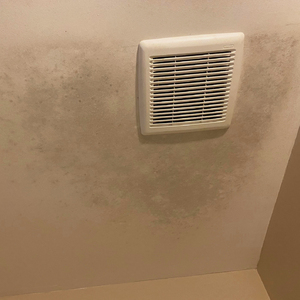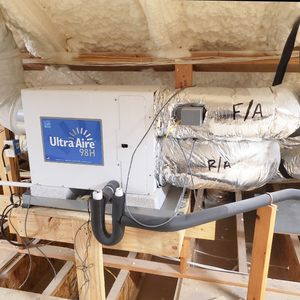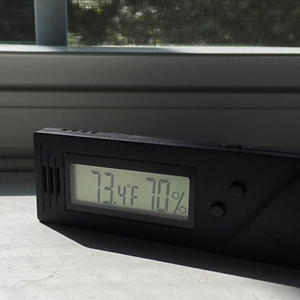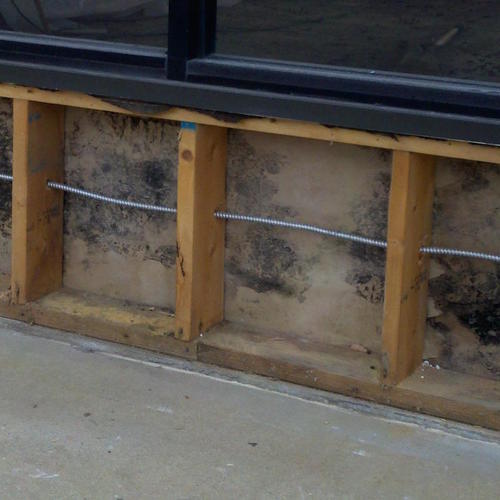
Residential air conditioning—the invention that allows residents of hot, humid climates to retreat to a cool, dry oasis—only became common in the U.S. after World War II. So how did our great-grandparents manage to live with high indoor humidity?
Interest in this question isn’t just limited to historians, of course. Some Americans—including a few green builders—are interested in designing houses for hot, humid climates that work well without air conditioning. Whether or not these designs are successful depends in part on the expectations and flexibility of the residents.
Comfort is subjective
Some people feel comfortable in hot, humid weather, even without air conditioning. As long as they have a few ceiling fans, they’re happy.
That said, when it comes to living with high humidity, human comfort isn’t the only issue. Condensation and mold can cause hard-to-solve problems for indoor objects and furnishings.
For example, some types of camera equipment and computer equipment can malfunction in humid conditions. The worst problems occur when equipment is transferred from a cool location—perhaps an air-conditioned car—to conditions that are hot and humid. When hot, humid air contacts a cold surface, the result is condensation—and condensation can easily cause problems with cameras or computers.
Moreover, in humid conditions, porous materials like drywall, shoes, and all kinds of fabric (including clothes, curtains, and upholstery) are susceptible to mold. If conditions aren’t extreme, mold can be often prevented by tricks that encourage air circulation: by regular use of a fan, by leaving closet doors open, by moving furniture away from walls, or by designing houses to catch breezes.
While these methods can help, they aren’t foolproof.
A visit to Costa Rica
My wife and I were recently delighted to accept an invitation to visit…
Weekly Newsletter
Get building science and energy efficiency advice, plus special offers, in your inbox.

This article is only available to GBA Prime Members
Sign up for a free trial and get instant access to this article as well as GBA’s complete library of premium articles and construction details.
Start Free TrialAlready a member? Log in















10 Comments
I haven’t lived in a hot climate but I am fascinated by the topic of what Americans -and an increasing number of people worldwide- consider unlivable without AC. This has tremendous implications for the future of the planet.
While this issue has been written about, it rarely makes the news headline. A good book on the topic is "Losing Our Cool" by Stan Cox. It presents some eye-opening facts. Among other things it mentions that in the early 2000, the US (300 million people) used more energy for cooling alone than the entire African continent (1 billion+ people) consumed for all uses combined.
The vast majority of American would consider living in a Miami-like climate without AC a cruel punishment. I posted below the link that compares the climate of Miami where AC is everywhere, to Port Au Prince and Chennai (10 million people and growing) as an example. A hot day in Miami is a decent day in P-au-P or Chennai where living without AC is the norm for a majority of people.
Hundreds of millions -if not billions- live in considerably hotter conditions than the hottest US cities without AC. It is changing as a fast-growing number folks in the Global South buy an AC (and a car with AC) as soon as they can afford it. That's a huge problem, although we, Americans (energy-waste-champion of the past two centuries), are the last people who can assign the blame.
https://weatherspark.com/compare/y/110123~18622~25360/Comparison-of-the-Average-Weather-in-Chennai-Miami-and-Port-au-Prince
Regardless of what one thinks about what levels of heat and humidity people should be be able to tolerate without complaint, climate change is pushing more and more places beyond whatever threshold a given individual or population tolerates.
Thanks for the weatherspark comparison. While it compares how often those places are "muggy" or worse (65 F dew point or higher), those places often go way beyond that, into "oppressive" and, their worst category "miserable". Looking at the individual pages, one can see that Chennai has the highest dew points "miserable" much of the time for most months of the year, and "oppressive" most of the rest of the time. Port-au-Prince is significantly better--almost never "miserable", and "muggy" more often than "oppressive". Miami is a little different, in that it's only bad from June through Sept., but during that time it's worse than Port-au-Prince, miserable a significant amount and oppressive the rest of the time.
You can see that comparison more clearly on this web site, using the first item in the dropdown menu to display dew point.
https://www.weatherbase.com/compare.php3?first=93487&second=20227
https://www.weatherbase.com/compare.php3?first=97234&second=20227
Great topic. I've wondered about this ever since spending the first 20 years of my life in northern CA without air conditioning, then moving to the southeast for a decade and being frustrated with - and eventually sympathetic to - the need for AC. A couple thoughts:
- I was going to note that the lack of glazing in the windows might be a security concern for some people, but then I noticed the caption that states that the windows - at least the kitchen windows - have a "hinged security grille". Seems like a pretty good solution!
- Re: the exterior wall construction **lightweight construction methods (rigid foam with wire mesh panels encased on both sides with Shotcrete)**, is that to let heat generated in the house escape quickly? Or to keep heat from the hotter outdoors out? Or to just generally have low thermal mass?
- Cupola is really neat; would love to see some simple diagrams of how that works with construction like this... how is it integrated with the insulated sloped roof? How do the volumes of air in the interior rooms communicate with it?
- I had to google Peltier effect dehumidifiers. Seems like they have a cold element that condenses the moisture and a hot element that, if it is in the same space as the cold element, keeps the system from producing any net sensible cooling. I'd imagine that last bit is critical to keep the wallboard of this room from itself becoming a condensing surface for the warm moist air in adjacent rooms.
- I've often be troubled by the fact that in the South we think we "need" AC - and I concede that many of our prized possessions deteriorate without it - when we know that there were people who lived here and thrived for thousands of years without any mechanical cooling. Granted their dwellings were different in many ways from what we build now, but I'd be very curious to hear any thoughts on how, say, the Cherokee or the Seminole people dealt with both mold and comfort issues.
M
The overall system operation of a Peltier effect dehumidifier is similar to a conventional compression cycle dehumidifier. Both have a heat pump and condense water on the cold side and heat the space from the hot side. They both produce significant heat. The Peltier option is substantially less efficient, but is quieter and more feasible in a small scale for a closet or similar.
Maximilian,
Q. "The exterior wall construction -- 'lightweight construction methods (rigid foam with wire mesh panels encased on both sides with Shotcrete)' -- Is that to let heat generated in the house escape quickly? Or to keep heat from the hotter outdoors out? Or to just generally have low thermal mass?"
A. In this type of climate, low thermal mass is good -- you don't want a west-facing wall to be made of uninsulated concrete, since the sun will heat the concrete up every day and render residents miserable. Insulation is, of course, always a good idea, especially when your house is cool in the morning and the day gets progressively hotter.
Q. "Cupola is really neat; would love to see some simple diagrams of how that works with construction like this... how is it integrated with the insulated sloped roof? How do the volumes of air in the interior rooms communicate with it?"
A. Attached below is an exterior photo of the cupola. The living area has a high cathedral ceiling that connects directly to the cupola. There are also openings in the bathrooms that allow air to flow upward to the cupola. Patrick told me that prevailing winds sometimes allowed rain to enter the louvered openings in the cupola, so the cupola was modified after construction with plexiglass to limit water entry on one side of the cupola -- slightly diminishing the net free area of ventilation but solving the water entry problem.
Thank you Martin, and thanks to Patrick and Gretchen for letting you share photos of their house.
Another reason people have windows instead of open air in hot climates is to keep all the creepy crawly things out. I have distinct memories of visiting families houses in tropical places where the windows just had bars, and there were lizards and geckos a plenty in the house. Sure, a screen would keep the biggest of them out, but also would impede airflow.
Maybe a good compromise for those who can't afford land on a hill would be strategically designed mechanical ventilation run off a solar array.
Dan,
You're right. In Costa Rica, there are lots of creatures who like to come indoors, including ants.
Those lizards and geckos are eating the insects that it's almost impossible to keep out without access to resources and detailing practices unheard of in most of the world. Often in the Visayas, people are glad to have a couple of those pretty big little lizards running around the house, eating roaches and such. The typical house leaks enormously... but almost by design: if you know the roof is gonna leak forever, you may as well let it drain out of the floor. I've seen a number of really ingenuous, resourceful things like this in my travels, and although I wouldn't design a building around them if I had my druthers, they're a nice contrast to the neurotic practices we end up in when trying to optimize temperature/humidity/air quality/etc in modern homes...
> Often in the Visayas, people are glad to have a couple of those pretty big little lizards running around the house, eating roaches and such
I've heard the same from family living in tropical developing countries, but at the same time they want A/C because they live in dense urban areas with no access to cooling breezes, not beaches or hilltops.
Many of the old low tech ways of beating the heat are defeated by the sheer density of where most people (and hence most energy consumption) are located. Think Cairo or Chennai, not Cozumel or Chiapas.
Log in or become a member to post a comment.
Sign up Log in